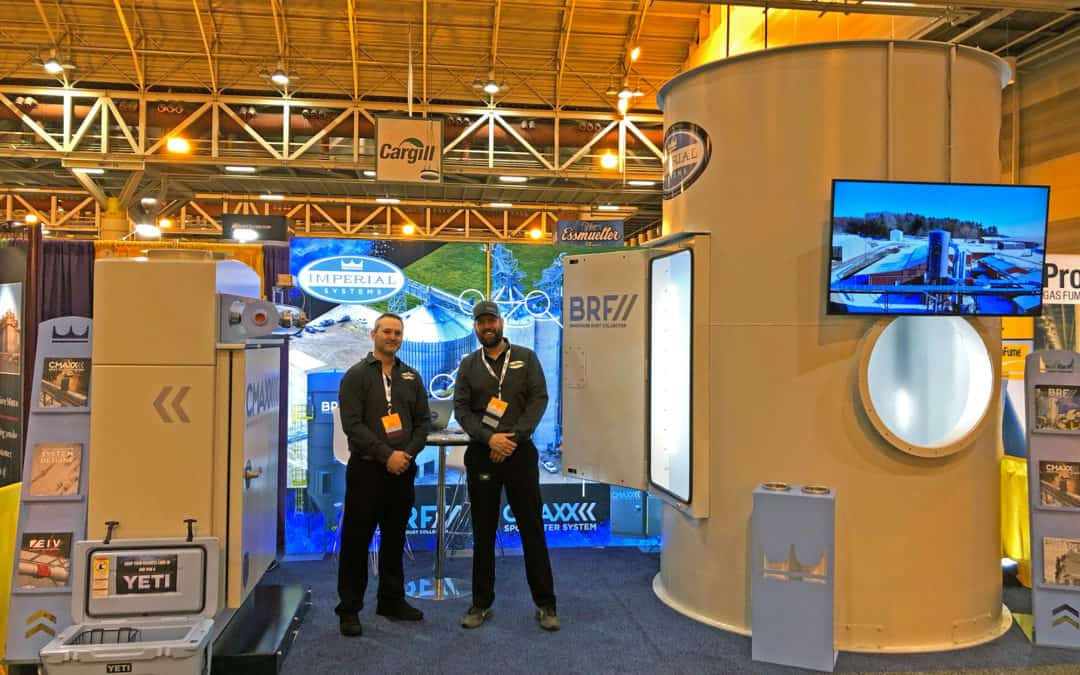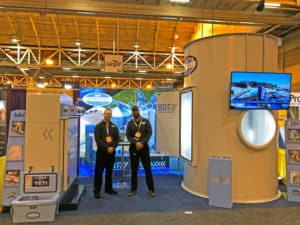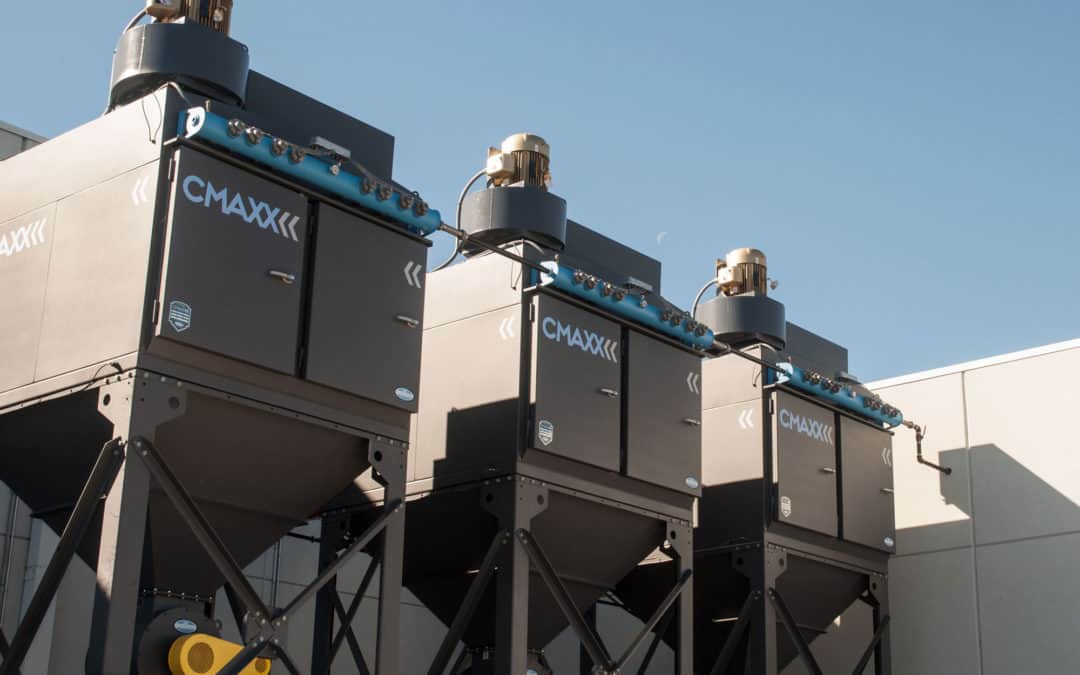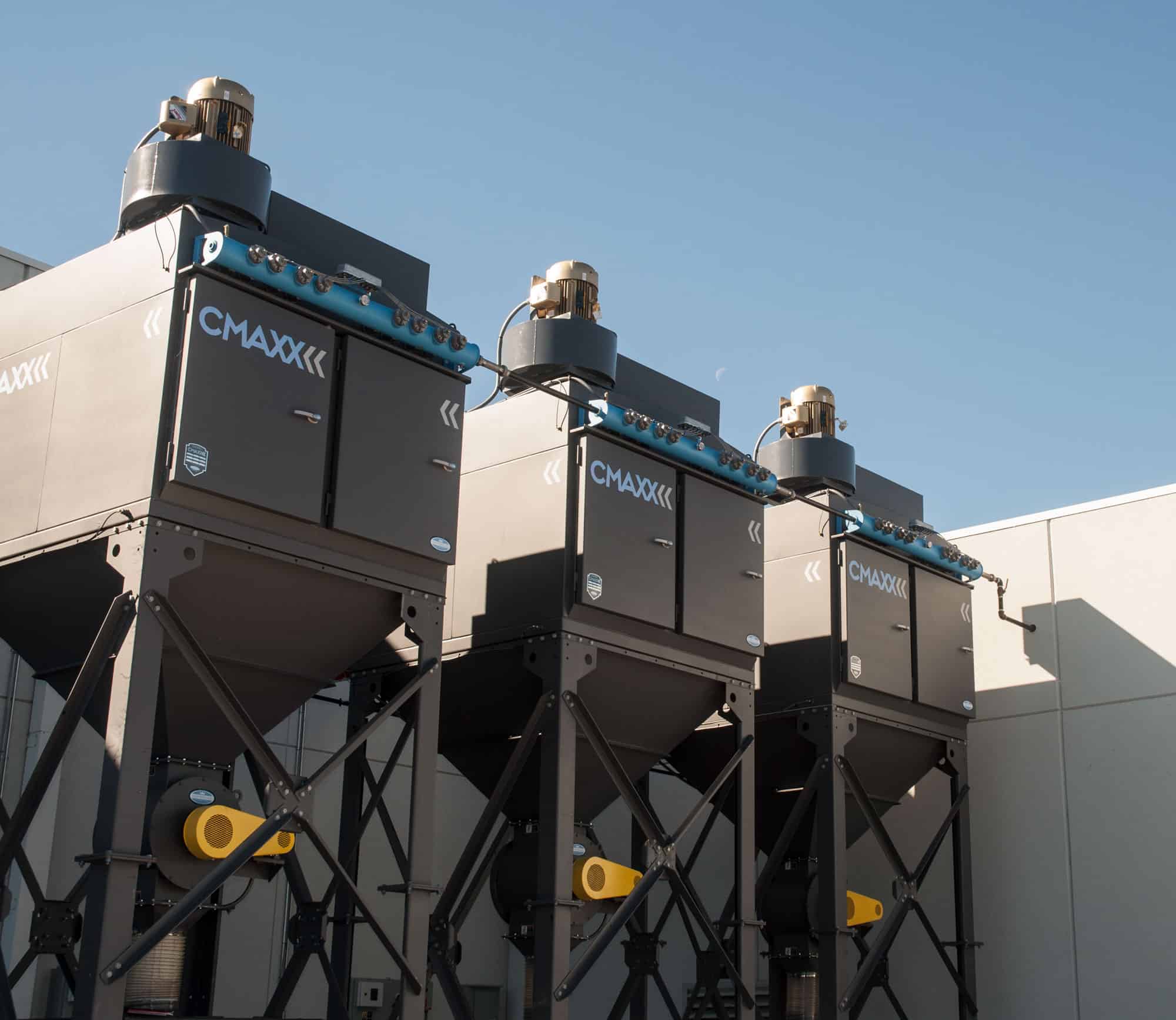
by Erin Long | Jul 19, 2019 | Hidden from Archive
The following story is true. The town names have been changed to protect the innocent.
Did you ever have one of those days when things went all wrong? Let me share with you the worst sales call of my career. The day began well. It was a beautiful mid-spring morning. The early flowers were in full bloom and the birds were harmonizing their mating songs. The air smelled sweet and the sunrise was glorious. The morning ride to the office wasn’t hot enough to have the A/C on, but warm enough to have the windows down and enjoy the fresh morning air. It was just one of those mornings that made you happy to be alive. That was before it all went sideways.
I arrived at the office around 7:30 AM, happy as a lark. It was a big day. I was making a sale call to one of my largest clients and fully expected to close on the deal. Since this customer’s location was roughly 100 miles north, I decided to take a design tech with me to field measure and gather any necessary information. I wanted to hit the ground running and avoid a second costly field measure trip. The appointment was set for 10 AM and if we got on the road by 8:30 there was plenty of time to make the appointment. That is when things began to sour. I had just gotten off the phone with the design tech telling him to meet me at the front door when my phone rang. It was one of our field mechanics needing some information for a job he was installing. I had to look up the information for him or it would be a costly delay for his install. Ten Minutes later I was ready to go when the phone rang again. My boss this time needing me to do something for him before I left. By now Steve, the design tech, was standing in my office door taping his wrist watch. Once my boss was satisfied, I grabbed my brief case to leave as the phone rang again. We ignored it and left.
 We were behind. It was time to give the client a call to let him know we got a late start and were running about 30 minutes behind. They are understanding and told me there is no rush, we could meet when I arrived. Steve and I were now heading north on the Interstate on this beautiful sunny day. The windows were down, the radio was blaring, and Steve and I were adding our musical talent to Wild Cherry singing “Play-That-Funky-Music-White-Boy”, when my Chevy Tahoe gave a lurch and a sputter. My heart sunk into my stomach as I suddenly remembered I was going to fill the gas tank on the way into the office that morning. When my Tahoe’s gas gauge was just a sliver above the red empty line, the tank was bone dry. I dared to glance at the fuel gauge and shouted, “OH SUGAR”. Only it wasn’t sugar I shouted. The needle was sitting on the redline. We were still moving but the engine sputtered a second time. I did some quick thinking and remembered the last exit was about 15 miles back. Then I saw hope. We were passing a big green interstate sign saying, “Podunk, 1/2 mile”. The engine sputtered a third time and I took my foot off the gas to coast as much as possible. We reached the exit ramp. I did not brake at the stop sign but continued to roll on through as far as possible toward Podunk. The engine sputtered one last time and finally died about 500 yards beyond the exit ramp. I rolled over onto the shoulder of the most desolate two-lane highway you ever saw. We had come to a stop next to a grassy knoll and a farmer’s corn field with young plants about six inches high for as far as the eye could see.
We were behind. It was time to give the client a call to let him know we got a late start and were running about 30 minutes behind. They are understanding and told me there is no rush, we could meet when I arrived. Steve and I were now heading north on the Interstate on this beautiful sunny day. The windows were down, the radio was blaring, and Steve and I were adding our musical talent to Wild Cherry singing “Play-That-Funky-Music-White-Boy”, when my Chevy Tahoe gave a lurch and a sputter. My heart sunk into my stomach as I suddenly remembered I was going to fill the gas tank on the way into the office that morning. When my Tahoe’s gas gauge was just a sliver above the red empty line, the tank was bone dry. I dared to glance at the fuel gauge and shouted, “OH SUGAR”. Only it wasn’t sugar I shouted. The needle was sitting on the redline. We were still moving but the engine sputtered a second time. I did some quick thinking and remembered the last exit was about 15 miles back. Then I saw hope. We were passing a big green interstate sign saying, “Podunk, 1/2 mile”. The engine sputtered a third time and I took my foot off the gas to coast as much as possible. We reached the exit ramp. I did not brake at the stop sign but continued to roll on through as far as possible toward Podunk. The engine sputtered one last time and finally died about 500 yards beyond the exit ramp. I rolled over onto the shoulder of the most desolate two-lane highway you ever saw. We had come to a stop next to a grassy knoll and a farmer’s corn field with young plants about six inches high for as far as the eye could see.
 There was a mileage sign that said, “Podunk 3 miles”. It was time to call the client again and tell them it would be even later. I didn’t want to say I ran out of gas, so I just said we were having some car issues. The next call was to AAA. That was when my cell phone died. Now we were in trouble. We had been there for 15 minutes and not a single car had passed by. I was an avid bicyclist back then, and my trusty Trek road bike was always in the back of my Tahoe. I told Steve not to worry, I would ride my bike into Podunk to get some gas. The six miles round trip should not take more than a half hour and I would be back with some gas. Normally I would ride in my bike shorts, cool wicking riding jersey and clip in bike shoes. For this ride I had to settle for dress slacks, button down shirt, neck tie, and hard dress shoes. I was uncomfortable and sweating within a half mile. When I made it into Podunk, I found it was at a cross road with US‑22. There was a small post office, three or four paint peeling houses, and an Amoco gas station with attached diner. A sign in the grimy windows read, “Eat Here and Get Gas!” All the windows were dirty with age and it was obvious this place had been closed for at least 30 years. A mangy, one-eyed dog stared at me from a front yard that had not been mowed in recent history and gave me a low warning growl. Then I noticed a sign on US-22 that said, “Salvation, 5 miles”. I’ve been through salvation several times and I knew it to be a larger community that supported a super Walmart and several gas stations. It seemed my adventure just got five miles longer as I pointed my bike up Route 22. About a half mile from the Salvation city limits there was a road crew doing repair work. I was forced onto the shoulder of the road where my high-pressure road bike tire immediately got a flat…”SUGAR!” I had to push my bike into Salvation. Not only did I have to get gas but also repair my flat tire, and I had stupidly left my spare innertube and bike tools in the Tahoe. It was also about this time I realized I was limping. My hard-soled dress shoes where not meant to wear while riding a bicycle, and I developed a blister on my toe.
There was a mileage sign that said, “Podunk 3 miles”. It was time to call the client again and tell them it would be even later. I didn’t want to say I ran out of gas, so I just said we were having some car issues. The next call was to AAA. That was when my cell phone died. Now we were in trouble. We had been there for 15 minutes and not a single car had passed by. I was an avid bicyclist back then, and my trusty Trek road bike was always in the back of my Tahoe. I told Steve not to worry, I would ride my bike into Podunk to get some gas. The six miles round trip should not take more than a half hour and I would be back with some gas. Normally I would ride in my bike shorts, cool wicking riding jersey and clip in bike shoes. For this ride I had to settle for dress slacks, button down shirt, neck tie, and hard dress shoes. I was uncomfortable and sweating within a half mile. When I made it into Podunk, I found it was at a cross road with US‑22. There was a small post office, three or four paint peeling houses, and an Amoco gas station with attached diner. A sign in the grimy windows read, “Eat Here and Get Gas!” All the windows were dirty with age and it was obvious this place had been closed for at least 30 years. A mangy, one-eyed dog stared at me from a front yard that had not been mowed in recent history and gave me a low warning growl. Then I noticed a sign on US-22 that said, “Salvation, 5 miles”. I’ve been through salvation several times and I knew it to be a larger community that supported a super Walmart and several gas stations. It seemed my adventure just got five miles longer as I pointed my bike up Route 22. About a half mile from the Salvation city limits there was a road crew doing repair work. I was forced onto the shoulder of the road where my high-pressure road bike tire immediately got a flat…”SUGAR!” I had to push my bike into Salvation. Not only did I have to get gas but also repair my flat tire, and I had stupidly left my spare innertube and bike tools in the Tahoe. It was also about this time I realized I was limping. My hard-soled dress shoes where not meant to wear while riding a bicycle, and I developed a blister on my toe.
The first concern was to fix the flat tire. I soon learned that Salvation did not have a decent bike shop where I could purchase an innertube for my bike, and Walmart just doesn’t sell items for better quality road bikes. I also discovered that Walmart didn’t have a single gas can I could purchase. Two hardware stores later and I gave up on any hope of fixing the flat tire, and even finding a gas can to buy. On the third stop I asked the store clerk what was going on with the gas cans? He told me the federal government had passed new legislation on gas can safety that went into effect that very day. They had plenty of the gas cans, but they were pulled from the shelves and could not be sold because they did not meet the new safety requirement. I was in despair. What was I going to do? I told Steve I would be back in a half hour and I’d been gone at least two hours now. I could not go on pushing the bike and I asked if I could leave it at the last hardware store until I could get back for it. They were kind enough to put it into safe keeping for me.
 I started trudging back, wondering what I was going to do, when I noticed an Auto Zone store. I gave it a shot and found that they did have the new federally approved safe gas cans in one, two, and five-gallon sizes. My Tahoe would suck one gallon of gas just trying to crank over and I knew I would never be able to carry five gallons of gas for eight miles. I bought the two gallon can and filled it up at the station next door. I began my walk limping up US 22 to Podunk lugging two gallons of gas with my thumb out. I was thirsty, hot, tired, hurting, and probably looked like a wild man in a neck tie with my dress shirt half untucked from my slacks. I could not blame the first 500 cars that passed me by. I gave up all hope of catching a ride. I also realized it was at least three hours since I last called my client. They probably thought I just stood them up and awarded the order to my competitor. I lamented over the lost sale as I continue to limp along. SUGAR! SUGAR! SUGAR! I also worried about Steve who has now been waiting on the side of the road for over four hours. I would be the butt of many jokes once Steve returned to the office to gossip this tale about.
I started trudging back, wondering what I was going to do, when I noticed an Auto Zone store. I gave it a shot and found that they did have the new federally approved safe gas cans in one, two, and five-gallon sizes. My Tahoe would suck one gallon of gas just trying to crank over and I knew I would never be able to carry five gallons of gas for eight miles. I bought the two gallon can and filled it up at the station next door. I began my walk limping up US 22 to Podunk lugging two gallons of gas with my thumb out. I was thirsty, hot, tired, hurting, and probably looked like a wild man in a neck tie with my dress shirt half untucked from my slacks. I could not blame the first 500 cars that passed me by. I gave up all hope of catching a ride. I also realized it was at least three hours since I last called my client. They probably thought I just stood them up and awarded the order to my competitor. I lamented over the lost sale as I continue to limp along. SUGAR! SUGAR! SUGAR! I also worried about Steve who has now been waiting on the side of the road for over four hours. I would be the butt of many jokes once Steve returned to the office to gossip this tale about.
Then my luck changed. A rusty old pick-up pulled alongside, and a weather face of an old woman looked out and asked If I needed help? Along with all those “SUGARS” I was also saying a few prayers and the Lord heard me. It was an old farmer and his wife returning from grocery shopping. They told me to put the gas can in the truck bed and climb in. The truck was a standard cab with a single bench seat. The farmer’s wife scooted to the middle and make room for me. They had purchased a large tub of fresh strawberries and were munching on them as the farmer’s wife removing the stems. They offered me several and nothing tasted better to my parched mouth that those juicy berries. I relayed my tale of woe to them and told them where my Tahoe sat. The farmer said, “ That must be your car we saw next to our farm when we pulled out of our driveway this morning. You should have just come down our road. I always keep a hundred-gallon tank full at the barn for the tractor”. When the farmer dropped me off at my Tahoe, I thanked him for his kindness. He then told me if I turned around and crossed over the intestate there was a gas station about a mile down the road…SUGAR!
I found Steve laying in the grassy field . He had fallen asleep waiting for me. He was upset with me and said a few SUGARS of his own, but as I looked at him, I started to snicker. He asked what was funny and I said , “Oh, nothing”, and let it drop. Steve had been asleep in that field a long time. He looked like the Batman villain, Two-Face. One half of his face was bright red and the other pale flesh.
I dreaded the next day when I called my client. I explained the details of the previous day leaving nothing out, and asked forgiveness for standing them up. There was dead silence on the other end of the phone, and I feared I lost one of my best customers. Then I hear a peal of laughter. My client said, “Charlie, that is the dandiest excuse I ever heard for missing a meeting. Come on up and see us today. We have an order waiting to place”. I don’t recommend anyone using this sales technique to get an order, but if you do, Good Luck With That!
Read more

by Erin Long | Jul 19, 2019 | Hidden from Archive
Grain dust is one of the biggest combustible dust hazards in the industry. OSHA doesn’t have a combustible dust rule for general industry, but they do have one for agriculture and food processing (1910.272) because of the high risk and number of accidents. The NFPA also has a special standard for this industry (Standard 61) to try to reduce the number of combustible grain dust explosion accidents.
Grain dust explosions increased in 2018 over previous years, with twelve explosions compared to seven the year before, according to Purdue University’s Department of Agricultural and Biological Engineering. However, injuries and fatalities decreased from five deaths and twelve injuries to one death and four injuries.
This statistic only considers reported grain dust explosion incidents, and explosions without injuries may not be reported. There are also many grain dust fires that are not reported but still cause significant property damage. Some companies with a reported explosion that caused injuries had a history of multiple smaller fires and explosions that weren’t reported.
In most of the reported incidents, the ignition source was unknown. This was usually because the area where the explosion occurred was too damaged to track down possible ignition sources. Known ignition sources included sparks from machinery and overheated bearings. The number of possible ignition sources is almost unlimited because grain dust is so easy to ignite.
OSHA has reported that since they started enforcing their standard in 1987, the number of explosions has decreased significantly. Prior to those regulations, grain dust fires and explosions were often considered to be an inevitable cost of handling and storing grain. With process hazard analysis now required, problems are more likely to be identified before there’s an accident.
Still, grain dust explosion accidents continue to happen. Often, the hazard has been identified but not addressed. An example would be allowing grain dust to accumulate around the facility. Often, the thought is that it’s never been a problem before. It may not be a problem until the dust is stirred up and the cloud finds an ignition source. The danger here is that the first cloud of stirred-up dust might be small and only cause a quick flash fire, but the force of this could disturb and ignite much larger amounts of dust. This is called a secondary explosion, and it is usually bigger and more destructive than the first one.
Major sources of accumulated grain dust are pieces of grain handling equipment, such as bucket elevators, conveyors, mixers, and grinders. Since grain is being moved around in these processes, a lot of dust often escapes unless there is a dust collection system there to capture and remove it.
Baghouses are popular for dust collection in the grain industry, but cartridge collectors can also be used. They are especially useful as spot collectors because they are small and can be located over a particular spot where dust is being produced. Baghouses are usually large because they need lots of bags to provide enough surface area for good filtration. A cartridge collector can be much smaller because the pleated cartridges have a much higher surface area than bags.
A dust hazard analysis will identify places such as grain elevators where dust is likely to be a problem. Before planning and installing dust collection or dust control measures, all the hazards should be identified. This includes any areas where a breakdown in normal processes could cause dust to build up or potential ignition sources that could develop, such as overheating machine parts. A dust hazard analysis is required by NFPA 652, the most recent combustible dust handling standard. NFPA 652 is not meant to replace NFPA 61 or other industry-specific standards, but anything in NFPA 652 that isn’t addressed in the industry standard still applies.
Deaths from grain dust explosions may have decreased, but they continue to occur. This happens even though the grain and agriculture industry has been one of the earliest officially regulated combustible dust hazards. Dust collection is an essential part of grain dust control and should be in use anywhere that dust can build up during the process.
Read more

by Erin Long | Jul 19, 2019 | Hidden from Archive
 GEAPS (Grain Elevator and Processing Society) 2019 in New Orleans featured some of the largest Grain and Seed processing equipment companies. This year at GEAPS was the first year that we decided to bring some rather large equipment. We really wanted to show up and show off some of our new technology. Our booth featured our new BRF Medium Pressure baghouse. We built a 7 foot clean air plenum to demo the new cleaning system. We also had a CM002 Spot filter on display as well. Both of these items will be on display at our showroom.
GEAPS (Grain Elevator and Processing Society) 2019 in New Orleans featured some of the largest Grain and Seed processing equipment companies. This year at GEAPS was the first year that we decided to bring some rather large equipment. We really wanted to show up and show off some of our new technology. Our booth featured our new BRF Medium Pressure baghouse. We built a 7 foot clean air plenum to demo the new cleaning system. We also had a CM002 Spot filter on display as well. Both of these items will be on display at our showroom.
The show had a little bit of everything to offer, from dump pits to rail cars to storage bins and engineering firms. Each company could have the need for dust collection in their facility as well as the grain companies that attended.
The show went well, and although not as big as Fabtech the show still pulled in the big names in the world of grain, seed, and food. During the show we would demonstrate the pulse cleaning system of our BRF-MP. If you have never heard this cleaning system in action, you have to imagine something similar to an air canon or spud gun being fired. This powerful blast is designed to clean off the dust that would build up on the bags. Eventually we had to shut that down due to the sudden blast scaring everyone that wasn’t paying attention. Fortunately, we could still show the moving arm and explain the auto calibrating pulsing system. We also had our CMAXX Spot Filter showing the different applications that would benefit any source capture grain process. Giving customers the opportunity to get hands on with our equipment is really when they see the difference. Our equipment visually has clean lines and looks great, while being able to see how heavy duty it is makes a difference. Not to mention the simplicity of the CMAXX filter changeout. You can really see people’s faces light up when they realize how much thought and care we put into our products.
New Orleans weather was a nice reprieve from the cold rain of western Pennsylvania. The city was colorful and we got to experience a little bit of the culture. We went to the French Quarter and got beignets and coffee and watched the street performers. We also had some of the local creole cuisine which was excellent. You can still see the aftermath of hurricane Katrina but it is obvious the city is rebuilding and moving forward.
All and all, GEAPS in New Orleans went well. We got to talk to great people from the grain industry as well as getting to see all of the equipment that services this industry. We got some great leads and gave the grain community a chance to see our equipment first hand.
Read more

by Erin Long | Jul 17, 2019 | Uncategorized
Hammer mills process grain and other products in agriculture processes. Industrial hammer mill material handling requires dust collection to prevent combustible dust fires. Handling and transporting agriculture process materials are covered under NFPA 61 and OSHA 1910.272. Many other industries use hammer mills, which produce dust that may be combustible.

Hazards in Material Handling Equipment
Grain dust becomes flammable when it is airborne. Places in the process where grain dust becomes airborne include:
- hammer mill crushers
- conveyor belts and transfer points
- bucket elevator conveyors
- mixers
- loading and unloading points
- dryers
- spouts and hoppers
Material handling systems produce dust, and they also produce opportunities for ignition. A hammer mill grinder is one element of the agricultural process that produces large amounts of dust. A bucket elevator is another one, partly because the material moves around. It can also cause ignition because the bearings can overheat.
In addition to hammer mill material handling, dust can accumulate in other grain processes in agriculture. Some agricultural dust can be very combustible. Managing risk means removing elements of the so-called explosion pentagon. This includes oxygen, ignition source, fuel, containment, and dispersion. Oxygen will always be present, and the dust acts as a fuel. In various parts of the process, the material may be inside a closed space (containment). Therefore, the parts of the explosion pentagon that can be controlled are ignition sources and dispersion. This is true for hammer mill material handling and other process areas.
 Controlling ignition sources includes following all electrical safety standards and watching all equipment, like bucket conveyors, for overheating bearings. Removing all ignition sources is almost impossible. However, getting rid of as many as possible reduces the risk.
Controlling ignition sources includes following all electrical safety standards and watching all equipment, like bucket conveyors, for overheating bearings. Removing all ignition sources is almost impossible. However, getting rid of as many as possible reduces the risk.
Keeping dust from becoming airborne (dispersion) keeps a deflagration from starting. Once airborne dust ignites, the flame must not reach other areas. This is especially true for areas that could cause injury to people. Dust collection systems can prevent dispersion and the spread of a deflagration.
Dust Collection for Hammer Mill Material Handling
Depending on the material, hammer mills can produce a large amount of dust. Many other components of material handling systems, like bucket elevators, also produce dust. NFPA and OSHA standards require control of this dust. Dust must not build upon surfaces or become airborne. A well-designed dust collection system will prevent these.
Some agricultural processes will use a central baghouse with capture hoods located at various dust generating spots, including at the discharge of a hammer mill. This technique for hammer mill material handling can be very effective, especially if one central baghouse can handle the capture points.
Spot filters can be a very effective solution for larger facilities, or for ones where a central baghouse might be too far away. Spot filters can be located at many kinds of capture points for material handling equipment. These include bucket elevators, conveyors, mixers, hammer mills, and loading/unloading points. Cartridge collectors, which are small and compact, can be sized to fit at any of these points. Because the pulse cleaning of the filters is very efficient, filters can last a long time.
Many agricultural process facilities use a combination of both types of dust collection, with baghouses or large cartridge collectors in a central area and spot filters on more remote capture points. Both baghouses and cartridge collectors can work well for hammer mill material handling in agriculture. Depending on how fine the material powder is, a spot filter cartridge collector can be the best solution. This will keep fugitive dust from escaping at a capture point.
Learn more about our Grain Dust Collection Systems.
Read more

by Erin Long | Jul 10, 2019 | Uncategorized
Wondering if that aging thing behind the building needs a little work? One company put money into a dust collector upgrade. As a result, it ended up saving them from serious property damage and expensive repairs.
The dust explosion index dustsciencesafety.com issued an incident report. It chronicles that a company, which makes specialty automotive parts, suffered a metal dust fire in May 2018. Metal dust fires can be dangerous and explosive. So major damage could have been done to the building and people in it.
Luckily, the company had recently invested in upgrading its dust collection system, which includes several collectors. Thanks to this investment, the fire never escaped the dust collector. Firefighters arriving on the scene noted that because the fire was limited to the dust collector, it was easy to manage. Without the dust collector upgrade, the fire might have spread through the building.
Combustible Dust Hazards
 What kind of dust collector upgrade might save your building or employees from serious harm? Some old dust collectors may not have the kind of fire and explosion prevention devices required by NFPA standards on newer equipment. In some cases, it may be a poor system design. In other cases, the company or the system designers may not have known the dust could be combustible.
What kind of dust collector upgrade might save your building or employees from serious harm? Some old dust collectors may not have the kind of fire and explosion prevention devices required by NFPA standards on newer equipment. In some cases, it may be a poor system design. In other cases, the company or the system designers may not have known the dust could be combustible.
NFPA 652 requires that all facilities that handle combustible dust conduct a dust hazard analysis. It must include inspecting for any risk factors and figuring out how to fix them. The dust hazard analysis may reveal that the procedures for controlling combustible dust aren’t good enough. In that case, a dust collector upgrade or other improvements will be needed.
Fire and Explosion Prevention for Dust Collectors
One method of controlling fire or explosion is to prevent sparks or flames from getting into the collector at all. Install a spark arrestor, which is a passive protection device, in the ductwork before the dust collector. It will stop most, but not all, sparks. Another option is an active system with a spark detector. Once a spark or flame is detected, a chemical isolation system or abort gate triggers to isolate or divert it.
Other passive methods of fire and explosion control include explosion isolation valves. An advancing pressure wave will close the valve and isolate the explosion from moving forward. Probably the simplest tool, explosion venting, continues to be effective in releasing pressure from the collector. Also, consider a chemical suppression system inside the dust collector. It will suppress a fire that has reached the collector or started inside it.
If a dust collector is located inside a building, there must be a way to vent an explosion safely. Use a flameless explosion vent if an explosion can’t be vented outdoors. These are expensive and can allow dust to escape, so they shouldn’t be used with highly toxic materials. If there is no choice but to locate a dust collector inside, this may be the only feasible option.
Is a Dust Collector Upgrade Worth the Money?
Newer methods of fire and explosion control such as chemical isolation and suppression are dust collector upgrade options. Inspect old systems for any safety features that aren’t operating properly or don’t meet new standards. For example, a dust collector might not have enough explosion venting to meet current safety standards. Further, the filter media in the collector might be flammable instead of flame retardant material.
For the company mentioned at the beginning of this story, the decision to upgrade was very beneficial. Improving fire and explosion protection of their multiple dust collectors saved them an enormous amount of money. Firefighters noted that safety features kept the fire isolated inside the dust collector where it started. Had the fire spread back through the ductwork, large sections of the building could have been damaged.
Consider adding some new fire protection features, or upgrading an existing dust collector. Either costs much less than repairing fire-damaged buildings. As they often say, if you think safety is expensive, try an accident.
Read more

 We were behind. It was time to give the client a call to let him know we got a late start and were running about 30 minutes behind. They are understanding and told me there is no rush, we could meet when I arrived. Steve and I were now heading north on the Interstate on this beautiful sunny day. The windows were down, the radio was blaring, and Steve and I were adding our musical talent to Wild Cherry singing “Play-That-Funky-Music-White-Boy”, when my Chevy Tahoe gave a lurch and a sputter. My heart sunk into my stomach as I suddenly remembered I was going to fill the gas tank on the way into the office that morning. When my Tahoe’s gas gauge was just a sliver above the red empty line, the tank was bone dry. I dared to glance at the fuel gauge and shouted, “OH SUGAR”. Only it wasn’t sugar I shouted. The needle was sitting on the redline. We were still moving but the engine sputtered a second time. I did some quick thinking and remembered the last exit was about 15 miles back. Then I saw hope. We were passing a big green interstate sign saying, “Podunk, 1/2 mile”. The engine sputtered a third time and I took my foot off the gas to coast as much as possible. We reached the exit ramp. I did not brake at the stop sign but continued to roll on through as far as possible toward Podunk. The engine sputtered one last time and finally died about 500 yards beyond the exit ramp. I rolled over onto the shoulder of the most desolate two-lane highway you ever saw. We had come to a stop next to a grassy knoll and a farmer’s corn field with young plants about six inches high for as far as the eye could see.
We were behind. It was time to give the client a call to let him know we got a late start and were running about 30 minutes behind. They are understanding and told me there is no rush, we could meet when I arrived. Steve and I were now heading north on the Interstate on this beautiful sunny day. The windows were down, the radio was blaring, and Steve and I were adding our musical talent to Wild Cherry singing “Play-That-Funky-Music-White-Boy”, when my Chevy Tahoe gave a lurch and a sputter. My heart sunk into my stomach as I suddenly remembered I was going to fill the gas tank on the way into the office that morning. When my Tahoe’s gas gauge was just a sliver above the red empty line, the tank was bone dry. I dared to glance at the fuel gauge and shouted, “OH SUGAR”. Only it wasn’t sugar I shouted. The needle was sitting on the redline. We were still moving but the engine sputtered a second time. I did some quick thinking and remembered the last exit was about 15 miles back. Then I saw hope. We were passing a big green interstate sign saying, “Podunk, 1/2 mile”. The engine sputtered a third time and I took my foot off the gas to coast as much as possible. We reached the exit ramp. I did not brake at the stop sign but continued to roll on through as far as possible toward Podunk. The engine sputtered one last time and finally died about 500 yards beyond the exit ramp. I rolled over onto the shoulder of the most desolate two-lane highway you ever saw. We had come to a stop next to a grassy knoll and a farmer’s corn field with young plants about six inches high for as far as the eye could see. There was a mileage sign that said, “Podunk 3 miles”. It was time to call the client again and tell them it would be even later. I didn’t want to say I ran out of gas, so I just said we were having some car issues. The next call was to AAA. That was when my cell phone died. Now we were in trouble. We had been there for 15 minutes and not a single car had passed by. I was an avid bicyclist back then, and my trusty Trek road bike was always in the back of my Tahoe. I told Steve not to worry, I would ride my bike into Podunk to get some gas. The six miles round trip should not take more than a half hour and I would be back with some gas. Normally I would ride in my bike shorts, cool wicking riding jersey and clip in bike shoes. For this ride I had to settle for dress slacks, button down shirt, neck tie, and hard dress shoes. I was uncomfortable and sweating within a half mile. When I made it into Podunk, I found it was at a cross road with US‑22. There was a small post office, three or four paint peeling houses, and an Amoco gas station with attached diner. A sign in the grimy windows read, “Eat Here and Get Gas!” All the windows were dirty with age and it was obvious this place had been closed for at least 30 years. A mangy, one-eyed dog stared at me from a front yard that had not been mowed in recent history and gave me a low warning growl. Then I noticed a sign on US-22 that said, “Salvation, 5 miles”. I’ve been through salvation several times and I knew it to be a larger community that supported a super Walmart and several gas stations. It seemed my adventure just got five miles longer as I pointed my bike up Route 22. About a half mile from the Salvation city limits there was a road crew doing repair work. I was forced onto the shoulder of the road where my high-pressure road bike tire immediately got a flat…”SUGAR!” I had to push my bike into Salvation. Not only did I have to get gas but also repair my flat tire, and I had stupidly left my spare innertube and bike tools in the Tahoe. It was also about this time I realized I was limping. My hard-soled dress shoes where not meant to wear while riding a bicycle, and I developed a blister on my toe.
There was a mileage sign that said, “Podunk 3 miles”. It was time to call the client again and tell them it would be even later. I didn’t want to say I ran out of gas, so I just said we were having some car issues. The next call was to AAA. That was when my cell phone died. Now we were in trouble. We had been there for 15 minutes and not a single car had passed by. I was an avid bicyclist back then, and my trusty Trek road bike was always in the back of my Tahoe. I told Steve not to worry, I would ride my bike into Podunk to get some gas. The six miles round trip should not take more than a half hour and I would be back with some gas. Normally I would ride in my bike shorts, cool wicking riding jersey and clip in bike shoes. For this ride I had to settle for dress slacks, button down shirt, neck tie, and hard dress shoes. I was uncomfortable and sweating within a half mile. When I made it into Podunk, I found it was at a cross road with US‑22. There was a small post office, three or four paint peeling houses, and an Amoco gas station with attached diner. A sign in the grimy windows read, “Eat Here and Get Gas!” All the windows were dirty with age and it was obvious this place had been closed for at least 30 years. A mangy, one-eyed dog stared at me from a front yard that had not been mowed in recent history and gave me a low warning growl. Then I noticed a sign on US-22 that said, “Salvation, 5 miles”. I’ve been through salvation several times and I knew it to be a larger community that supported a super Walmart and several gas stations. It seemed my adventure just got five miles longer as I pointed my bike up Route 22. About a half mile from the Salvation city limits there was a road crew doing repair work. I was forced onto the shoulder of the road where my high-pressure road bike tire immediately got a flat…”SUGAR!” I had to push my bike into Salvation. Not only did I have to get gas but also repair my flat tire, and I had stupidly left my spare innertube and bike tools in the Tahoe. It was also about this time I realized I was limping. My hard-soled dress shoes where not meant to wear while riding a bicycle, and I developed a blister on my toe. I started trudging back, wondering what I was going to do, when I noticed an Auto Zone store. I gave it a shot and found that they did have the new federally approved safe gas cans in one, two, and five-gallon sizes. My Tahoe would suck one gallon of gas just trying to crank over and I knew I would never be able to carry five gallons of gas for eight miles. I bought the two gallon can and filled it up at the station next door. I began my walk limping up US 22 to Podunk lugging two gallons of gas with my thumb out. I was thirsty, hot, tired, hurting, and probably looked like a wild man in a neck tie with my dress shirt half untucked from my slacks. I could not blame the first 500 cars that passed me by. I gave up all hope of catching a ride. I also realized it was at least three hours since I last called my client. They probably thought I just stood them up and awarded the order to my competitor. I lamented over the lost sale as I continue to limp along. SUGAR! SUGAR! SUGAR! I also worried about Steve who has now been waiting on the side of the road for over four hours. I would be the butt of many jokes once Steve returned to the office to gossip this tale about.
I started trudging back, wondering what I was going to do, when I noticed an Auto Zone store. I gave it a shot and found that they did have the new federally approved safe gas cans in one, two, and five-gallon sizes. My Tahoe would suck one gallon of gas just trying to crank over and I knew I would never be able to carry five gallons of gas for eight miles. I bought the two gallon can and filled it up at the station next door. I began my walk limping up US 22 to Podunk lugging two gallons of gas with my thumb out. I was thirsty, hot, tired, hurting, and probably looked like a wild man in a neck tie with my dress shirt half untucked from my slacks. I could not blame the first 500 cars that passed me by. I gave up all hope of catching a ride. I also realized it was at least three hours since I last called my client. They probably thought I just stood them up and awarded the order to my competitor. I lamented over the lost sale as I continue to limp along. SUGAR! SUGAR! SUGAR! I also worried about Steve who has now been waiting on the side of the road for over four hours. I would be the butt of many jokes once Steve returned to the office to gossip this tale about. 


 GEAPS (Grain Elevator and Processing Society) 2019 in New Orleans featured some of the largest Grain and Seed processing equipment companies. This year at GEAPS was the first year that we decided to bring some rather large equipment. We really wanted to show up and show off some of our new technology. Our booth featured our new
GEAPS (Grain Elevator and Processing Society) 2019 in New Orleans featured some of the largest Grain and Seed processing equipment companies. This year at GEAPS was the first year that we decided to bring some rather large equipment. We really wanted to show up and show off some of our new technology. Our booth featured our new 



 What kind of dust collector upgrade might save your building or employees from serious harm? Some old dust collectors may not have the kind of fire and explosion prevention devices required by NFPA standards on newer equipment. In some cases, it may be a poor system design. In other cases, the company or the system designers may not have known the dust could be combustible.
What kind of dust collector upgrade might save your building or employees from serious harm? Some old dust collectors may not have the kind of fire and explosion prevention devices required by NFPA standards on newer equipment. In some cases, it may be a poor system design. In other cases, the company or the system designers may not have known the dust could be combustible.